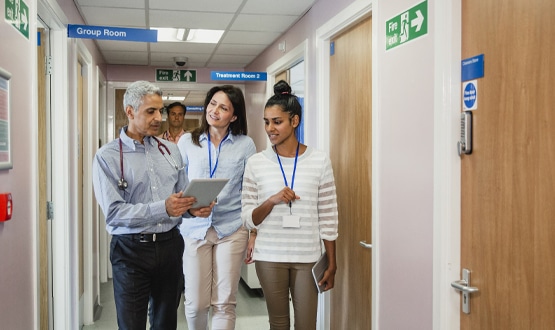Microsoft unveils CDM project
- 2 March 2010
 Coverage from HIMSS10
Coverage from HIMSS10
Microsoft and the Cleveland Clinic yesterday announced the results of a chronic disease management project for patients with hypertension, diabetes and heart failure.
The one year project prescribed patients monitoring devices linked to personal health records and the hospital’s electronic medical record.
It found that by doing this it was possible to better manage chronic conditions; detecting and addressing problems earlier and reducing visits for some patients.
The Microsoft-Cleveland Clinic project points to how technology can enable new models of chronic disease management to be developed; a pressing need given the ageing population.
More than 250 patients were enrolled, with participants using at-home heart monitors, glucometers, scales, pedometers or blood pressure monitors, depending on their condition.
The devices uploaded data to Microsoft’s HealthVault platform, which then connected to both the patient’s personal health record (MyChart, provided by Epic) and the EMR used by Cleveland Clinic (MyPractice, also provided by Epic).
The study found a significant change in the average number of days between doctor’s office visits for patients. Diabetic and hypertensive patients were able to visit less often, while heart failure patients visited their doctor more often.
Dr C Martin Harris, chief information officer, Cleveland Clinic, and president elect of HIMSS, said at a Monday press conference: “The real challenge of healthcare is transformation of delivery systems, using the opportunities that exist with technology in the marketplace.
"What we’ve been working on is changing the paradigm of chronic disease management.”
Instead of patients ending up in hospital every 180 days "and trying to make a course correction at day 181", he said both patients and clinicians needed information "to make regular course corrections."
Of the specific project, he said: “The patients’ clinicians were able to understand whether the values were normal or abnormal and make adjustments to their care."
Dr Harris said the biggest changes were in processes and visits required. “For diabetics who came back three to four times a year, we were able to increase the gaps between visits by 30-40%.”
In other cases, new technology was found to lead to more visits, because of the need to intervene before a crisis requiring an emergency admission.
“The number of heart failure visits actually went up. You may think of that as a failure, until you think where a heart failure patient usually winds up. Seeing patients in the office more often may result in better outcomes.”
Dr Harris said the full results will be published in a peer reviewed journal and a larger follow-up study is being planned.
Peter Neupert, vice president of the Microsoft Health Solutions Group, said: “The results of this pilot are promising and demonstrate how cost-effective and flexible technology solutions can support patients in better monitoring their chronic conditions from where they live and work.”
However, he said that while the technology was fast maturing, it was not quite ready for mass adoption. “We know we’ve got to make it true plug and play. That’s where we have to get to. That is probably still a couple of generations of work. It’s not there today.”




